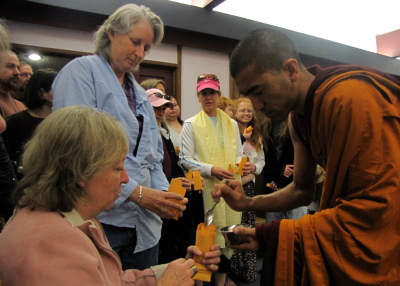Part One
The Unity Church of Spokane hosted the creation of a sand mandala by a travelling group of Tibetan monks.
"Sand Mandalas are unique to the Tibetan culture, they are believed to affect purification and healing. They are created by hand and embody traditional meditative designs that represent the universal qualities of harmony, balance, community, and pure wisdom."
There are many types of mandalas, but this particular design is known as the Mandala of Compassion.
"In general all mandalas have outer, inner, and secret meanings. On the outer level, they represent the world in its divine form; on the inner level they represent a map by which the ordinary human mind is transformed into enlightened mind; and on the secret level they depict the primordially perfect balance of the subtle energies of the body and the clear light dimension of the mind. The creation of a sand painting is said to effect a purification on these three levels.
"For centuries, Tibetan mandalas were seen exclusively by the monks and nuns of Buddhist monasteries. In 1988, however, the Dalai Lama, the spiritual leader of Tibetan Buddhism, decreed that a mandala be constructed for the public to witness."
From left to right, the Venerable Tritul Jampa Kalden, the Venerable Geshe Tenzin Choephel, and the Venerable Geshe Tenzin Dhargye. In 1987, Ven. Tritul Jampa Kalden was recognized as the 6th incarnate of Gaden Tripa Ngawang Choekyi by His Holiness the Dalai Lama.
"Traditionally, most sand mandalas are destroyed shortly after their completion. This is done as a metaphor of the impermanence of life."
Half the sand is swept into an urn while the other half is distributed to the audience. The Venerable Tenzin Thinlay translated much of the event and distributed the sand.
All quotes in this post are from a flyer made available at the event.





No comments:
Post a Comment